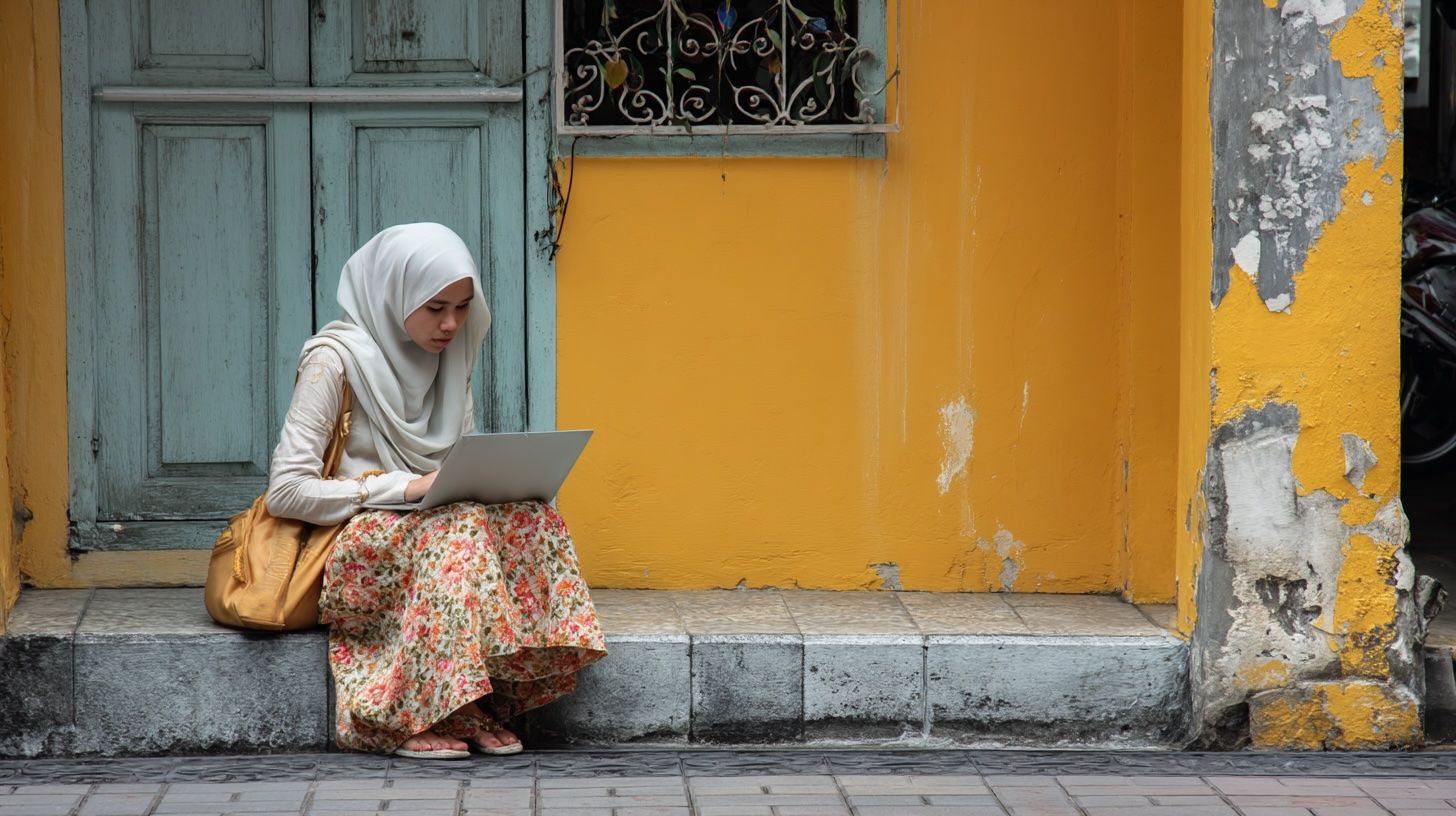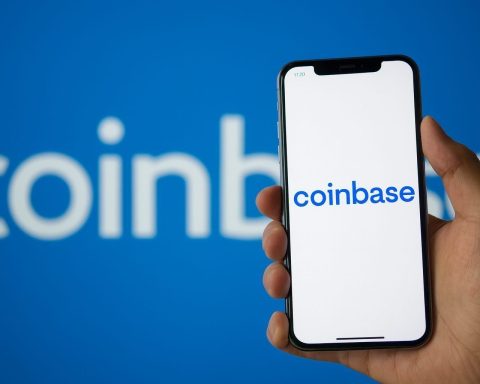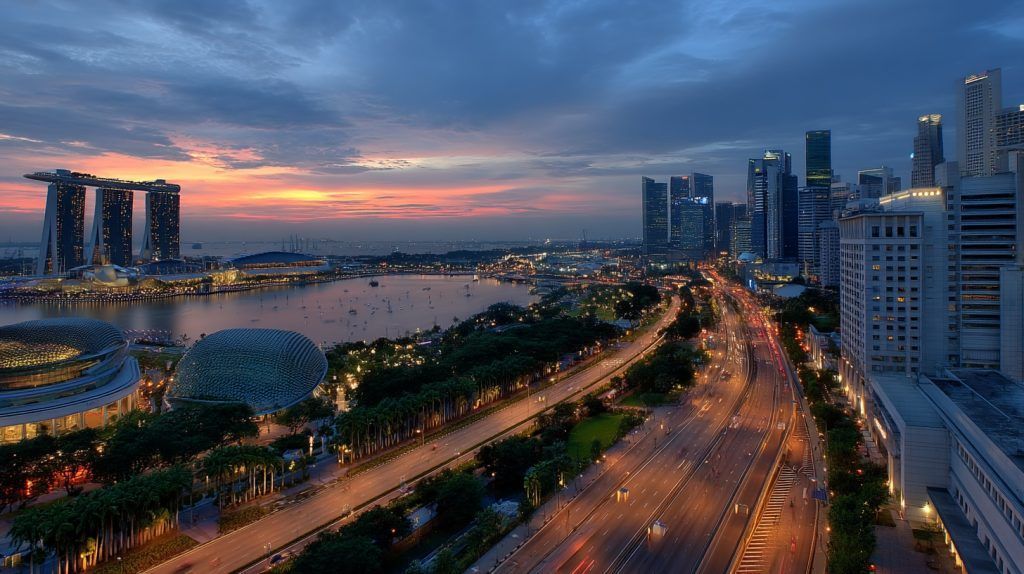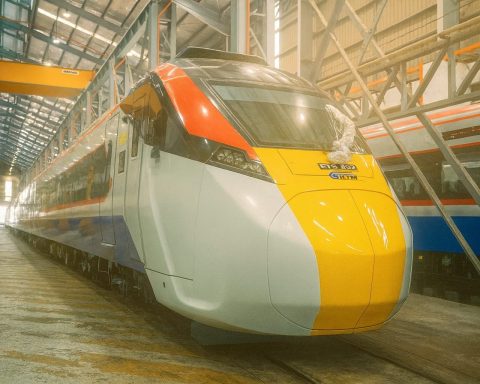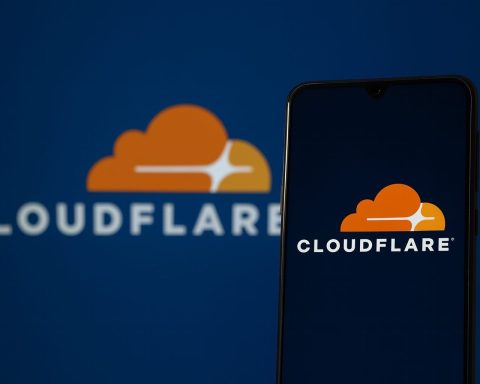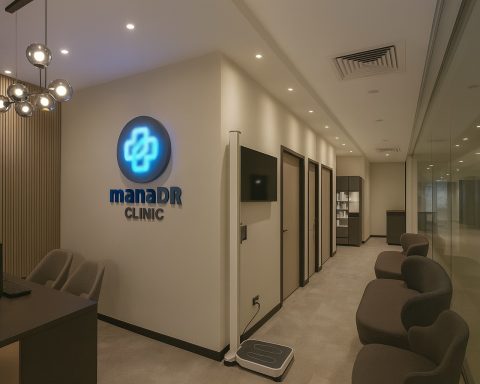- JENDELA (Jalinan Digital Negara) runs 2020–2025 and, by 2022 Phase 1 exceeded targets with 4G reaching about 97% of the population and fiber broadband deployed to 7.74 million premises, with Phase 2 targeting 100% population coverage in populated areas by end-2025.
- 4G coverage is about 97% of populated areas, with roughly 3% in geographies where access remains difficult, particularly in remote Sabah and Sarawak.
- Starlink Malaysia received a 10-year license in 2023, became commercially available mid-2023, with a monthly RM220 service, hardware kits priced around RM2,300 (standard) or RM11,000 (enterprise), delivering up to about 100 Mbps down and 20–40 ms latency.
- MEASAT ConnectMe operates prepaid satellite Wi‑Fi in underserved areas, with over 4,000 ConnectMe sites deployed by 2023, data priced at RM10 per GB or RM40 for 5 GB, and speeds around 30–60 Mbps with latency of 500–600 ms.
- 5G rollout started in 2021 via a wholesale model through DNB; by end-2023 about 80% of Malaysians were covered, early-2025 around 82% coverage, and a second network led by a U Mobile consortium was approved in 2024 to inject competition, with typical 5G speeds around 100–300 Mbps, peaks to 300–500 Mbps, and latency about 15–20 ms.
- Fixed broadband in Malaysia is led by TM’s Unifi with 30 Mbps (RM89/month) up to 800 Mbps (RM299/month) and 1–2 Gbps premium offerings, while TIME dotCom offers 500 Mbps (RM139/month) and 1 Gbps (RM199/month) and was the first to deploy a true 2 Gbps home plan.
- Mobile data is very affordable, averaging about USD 0.28 per GB; tourist options include CelcomDigi Tourist SIM at RM25 with 15–30 GB, Maxis Hotlink Tourist SIM at RM25 with 30 GB, and U Mobile Traveller SIM at RM35 with 14 days of unlimited data.
- Public Wi‑Fi is plentiful in cities and venues, with KLIA and KLIA2 offering free Wi‑Fi sessions of at least 3 hours, and Wireless@KL covering parts of Kuala Lumpur city center.
- The Malaysian mobile market is dominated by CelcomDigi (largest after the 2022 merger), with Maxis as the second-largest; U Mobile as a challenger, and Yes (YTL) launching 5G in December 2021 via the DNB network.
- There remains an urban–rural connectivity divide, with Sabah and Sarawak having slower rollout and Sarawak around 63% population coverage for 5G by early 2025, while programs like SMART initiative and PEDi centers aim to bridge the gap and satellite options like ConnectMe supplement fixed networks.
Overview of Digital Connectivity in Malaysia
Malaysia enjoys high internet penetration and modern digital infrastructure. As of 2022, about 97% of individuals in Malaysia were internet users [1], with nearly 96.9% of populated areas covered by 4G mobile service [2]. Internet access has become nearly ubiquitous in cities and towns, driven by widespread mobile broadband adoption and expanding fiber-optic networks. The government’s Jalinan Digital Negara (JENDELA)initiative (2020–2025) has been a key driver of improvements – Phase 1 (through 2022) exceeded targets by extending 4G to ~97% population coverage and fiber-optic broadband to 7.74 million premises [3]. Under JENDELA Phase 2, Malaysia is investing further in digital infrastructure to reach the remaining underserved areas, aiming for 100% internet coverage in populated areas by end of 2025 [4] [5]. Overall, Malaysia’s connectivity ecosystem is robust and continually improving, making it one of Southeast Asia’s more digitally connected nations.
Fixed Broadband (Fiber Optics and Home Internet)
Fiber-optic broadband is widely available in urban and suburban Malaysia, delivering fast and reliable internet to homes and businesses. The incumbent telco Telekom Malaysia (TM), via its Unifi service, has the broadest fiber network coverage in the country [6]. Competing fiber ISPs exist in many areas – for example, TIME dotCom offers high-speed fiber in major cities (often in condos and office buildings) with extremely competitive packages [7]. Maxis, CelcomDigi, and others also provide home fiber services, often by leasing TM’s infrastructure or via their own regional networks [8] [9]. In populous states like Selangor, Penang, Johor, and Kuala Lumpur, fiber connectivity is commonplace, whereas some rural and remote areas still lack fiber coverage (efforts are ongoing to expand the fiber footprint under JENDELA).
Typical Fiber Speeds & Plans: Malaysian fiber broadband is high-quality, with plans ranging from basic 30–50 Mbps up to gigabit speeds. TM’s Unifi, for instance, offers plans from 30 Mbps (RM89/month) up to 800 Mbps (RM299/month) [10], and even special 1 Gbps and 2 Gbps packages for heavy users [11]. Competing ISPs like TIME provide 100 Mbps for ~RM99 and true 1–2 Gbps plans (TIME was the first to introduce a full 2 Gbps fiber plan in Malaysia) [12] [13]. The table below shows a snapshot of common home broadband packages:
| Provider & Plan | Monthly Cost (MYR) | Download Speed | Notes |
|---|---|---|---|
| TM Unifi Fiber 100 Mbps | RM129 [14] | 100 Mbps (unlimited) | ~50 Mbps upload; widest coverage. |
| TM Unifi Fiber 300 Mbps | RM159 [15] | 300 Mbps (unlimited) | Mid-tier plan. |
| TM Unifi Fiber 800 Mbps | RM299 [16] | 800 Mbps (unlimited) | High-speed residential. |
| TIME Fiber 500 Mbps | RM139 [17] | 500 Mbps (symmetrical) | Limited to urban areas. |
| TIME Fiber 1 Gbps | RM199 [18] | 1,000 Mbps (symmetrical) | Ultra-fast, city areas. |
Table: Examples of home fiber broadband plans in Malaysia (prices as of 2023).
Quality and Reliability: Fiber broadband in Malaysia is generally reliable and delivers low latency, suitable for HD streaming, video calls, and online gaming. Malaysia’s average fixed broadband download speed is around 100–130 Mbps [19] [20], placing it among the top in the region for fixed-line speeds. Downtime is usually minimal; however, like any country, occasional service disruptions can occur (for example, when undersea cables face issues, international traffic may slow). In areas without fiber, DSL lines have largely been phased out in favor of wireless broadband solutions. Many Malaysians in semi-rural areas use fixed 4G/5G wireless broadband (offered by Unifi Air, CelcomDigi, etc.) as an alternative until fiber reaches them. Overall, for residents, a fiber connection (if available) is the preferred option for consistent high-speed internet.
Mobile Data Networks (4G and 5G)
Mobile broadband is the cornerstone of internet access for most Malaysians, with extensive 4G coverage and an accelerating 5G rollout. 4G/LTE networks cover about 97% of populated areas [21], ensuring that virtually all Malaysians have access to mobile internet. All legacy 3G networks were shut down by the end of 2021 to refarm spectrum for 4G [22], so even in rural regions users now rely on 4G as the minimum standard (2G GSM is maintained only for basic voice/SMS in some areas). The country’s major mobile operators – CelcomDigi, Maxis, U Mobile, Unifi Mobile (Telekom Malaysia), and Yes (YTL Communications) – each operate nationwide 4G networks. CelcomDigi (formed by a merger of Celcom and Digi in 2022) is now the largest mobile carrier, followed by Maxis [23]; these two together serve a large majority of subscribers and generally offer the widest coverage. U Mobile is a smaller but innovative player, and Yes 4G (Yes) was the first to launch 5G services via the new wholesale network in 2021 [24].
5G Rollout: Malaysia’s 5G deployment began in late 2021 via a unique single-wholesale-network model. A state-backed entity, Digital Nasional Berhad (DNB), built the first 5G network and leases access to all mobile operators [25]. 5G went live in Kuala Lumpur, Putrajaya, and Cyberjaya by end of 2021 [26], and coverage expanded rapidly through 2022–2024. By December 2023, DNB’s 5G network had reached ~80% of the population [27], exceeding initial targets. This prompted the government to approve a transition to a dual 5G network model – in 2024 a consortium led by U Mobile was authorized to develop a second 5G network to inject competition [28] [29]. As of early 2025, 5G signals are available in all capital cities and most towns, with about 82% population coverage achieved [30] [31]. Urban users with 5G-compatible devices enjoy a huge boost in speeds (often 10× faster than 4G), though some rural and inland areas (notably in East Malaysia) are still waiting for 5G coverage.
Mobile Network Speeds: Thanks to 4G LTE-Advanced and now 5G, Malaysia’s mobile internet speeds are quite impressive. In late 2023 the average mobile download speed was measured around 61.5 Mbps (ranking ~41st globally) [32]. 4G alone typically delivers 20–40 Mbps in many areas, and in uncongested conditions or with LTE-A, speeds can exceed 100 Mbps. The introduction of 5G has pushed performance even higher: 5G users see download speeds ~3× the national average – OpenSignal reported that Malaysians with 5G devices enjoy ~105.8 Mbps average downloads, compared to ~35 Mbps for all users overall [33]. Peak 5G downloads can reach 300–500 Mbps under ideal conditions [34]. For example, Yes and Unifi’s 5G networks (via DNB) achieved ~353 Mbps average 5G download speed as of mid-2023 [35]. Latency on 4G is typically ~30–50 ms, while 5G can bring latency below 20 ms, improving real-time application performance.
Despite these strong numbers, mobile service quality can vary by location and provider. In dense urban centers (Klang Valley, Penang, Johor Bahru), users generally experience reliable and fast mobile internet. In some rural or mountainous areas, signal strength may drop to 4G-only or even 2G in a few remote pockets, which affects speeds. The government acknowledges that roughly 3% of populated localities still faced internet access issues due to geography (e.g. deep rural villages) [36] [37]. To address this, new towers are being erected under JENDELA and operators are upgrading backhaul (over 50% of 4G sites now have fiber backhaul to support higher speeds [38]). Overall, for everyday users in Malaysia, mobile data is affordable and quite fast – Malaysia’s cost per GB of data is among the lowest globally (around $0.28 per GB on average) [39], and monthly data usage is high (over 21 GB per user in 2024, projected to reach 50+ GB by 2029 [40] [41]).
Public Wi-Fi Networks and Hotspots
Staying connected via Wi-Fi is easy in Malaysia’s cities, thanks to abundant free hotspots. In fact, local authorities in Kuala Lumpur and Selangor require restaurants and cafes to provide free Wi-Fi to customers [42]. This means almost every fast-food outlet, kopitiam (coffee shop), and shopping mall café offers Wi-Fi – from global chains like Starbucks and McDonald’s to local franchises like OldTown White Coffee. Major coffee chains explicitly have a policy of offering Wi-Fi to patrons [43], so visitors will find people working on laptops in many cafés. The quality of public Wi-Fi can vary: in higher-end venues and hotels it’s often fast, whereas some free networks in public spaces might be speed-limited. For example, the city of Penang’s public Wi-Fi initiative offers free connectivity but at modest speeds (historically capping at 1 Mbps) [44] [45].
Locations to find Wi-Fi: Aside from eateries, large shopping malls usually provide free Wi-Fi in common areas(usually you connect and sign up via a splash page). Airports are also well-covered – Kuala Lumpur International Airport (KLIA) and KLIA2 have free Wi-Fi for at least 3 hours per session, and most hotels, from budget to 5-star, include Wi-Fi for guests. Some cities launched municipal Wi-Fi networks: for instance, Wireless@KL covers parts of KL city center with free internet access in tourist areas [46]. Public libraries (e.g. the Raja Tun Uda library in Selangor) and universities also offer free Wi-Fi to visitors or students. Even many inter-city buses and trains now advertise Wi-Fi on board.
While using public Wi-Fi, basic precautions are advised. Open networks can be insecure, so avoid transmitting sensitive data without a VPN or secure connection. That said, public Wi-Fi in Malaysia is generally safe and very handy for travelers who need to get online quickly without a local SIM. In summary, between mobile data and ubiquitous Wi-Fi hotspots, one is rarely offline in Malaysia’s populated areas – you can check email from a café or upload photos from your hotel, often without paying anything extra.
Major Internet Service Providers (ISPs)
Fixed Broadband Providers
- Telekom Malaysia (Unifi) – TM is the national fixed-line provider and backbone of Malaysia’s internet infrastructure. Through its Unifi brand it offers fiber-to-the-home (and previously ADSL) nationwide. TM’s network reaches both Peninsula and East Malaysia, covering most towns. Unifi fiber plans range from 30 Mbps up to 800 Mbps and even 1–2 Gbps for premium users [47] [48]. TM also operates the main international gateways, so it’s central to Malaysia’s internet connectivity. Reliability is good, though at peak times some congestion or international latency can occur. TM also provides Unifi Mobile cellular service and some public Wi-Fi (“wifi@unifi”) in partnership with local councils.
- TIME dotCom (Time Broadband) – TIME is a smaller ISP focusing on high-density urban areas. It has a modern fiber network in condominiums, office complexes, and some housing areas in Kuala Lumpur, Selangor, Penang, Johor, etc. TIME is known for high speeds at competitive prices – e.g. 500 Mbps for RM139 and true 1 Gbps for RM199/month [49] [50]. It was also the first in Malaysia to deploy 10G-PON technology enabling a real 2 Gbps home broadband plan [51] [52]. The downside is limited coverage (not available in many smaller towns or rural areas). Where available, TIME often tops user satisfaction surveys for speed and value.
- Maxis Home Fibre – Maxis, primarily a mobile operator, also offers fiber broadband, mostly by reselling the national HSBB (High-Speed Broadband) network. Maxis’s home fiber plans mirror TM’s in speed (30 Mbps up to 800 Mbps) and are similarly priced [53]. In some areas Maxis has its own last-mile fiber or a partnership with Astro’s infrastructure. A perk of Maxis fiber is integration with Maxis mobile plans (e.g. unlimited mobile data when you bundle with home broadband). Maxis’s fiber service quality is on par with Unifi since the underlying network is often the same.
- CelcomDigi Fibre – After the Celcom-Digi merger, the combined company launched CelcomDigi Fibre to unify their fixed broadband offerings. CelcomDigi also leverages TM’s fiber network. Standalone packages for the general public include 50 Mbps (RM90), 100 Mbps (RM130), and 300 Mbps (~RM150) plans [54]. Discounts are given to Celcom/Digi postpaid mobile customers. While not as widely subscribed as Unifi, CelcomDigi Fibre is an alternative in many areas, riding on the open access fiber infrastructure Malaysia has fostered.
- Others: Several smaller or niche ISPs exist. Astro Fibre (run by pay-TV provider Astro) bundles broadband with TV content. Allo (a Tenaga Nasional subsidiary) is rolling out fiber in select suburbs and towns. In East Malaysia, Sacofa and CelcomDigi collaborate on fiber in Sarawak, and there are community broadband projects (e.g. Sarawak’s MySRBN for rural fiber). Also, where fiber is not present, fixed wireless broadband is offered by some (e.g. CelcomDigi had LTE-based home broadband plans, and TM offers a 4G-based Unifi Air service). These use mobile networks with higher data quotas for home use.
Mobile Network Operators
Malaysia’s mobile sector is served by five main network operators (after recent consolidations), all regulated by the Malaysian Communications and Multimedia Commission (MCMC):
- CelcomDigi – The largest mobile operator, formed by the merger of Celcom and Digi in late 2022 [55] [56]. CelcomDigi leverages the combined coverage of Celcom’s extensive rural 2G/4G network and Digi’s strong urban presence. It leads in subscriber market share and has a reputation for wide coverage especially outside cities [57]. CelcomDigi offers prepaid (Celcom Xpax and Digi Prepaid) and postpaid plans, with competitive pricing and large data bundles. It has signed on to DNB’s 5G service and is actively rolling out 5G to its customers. For most travelers and residents, CelcomDigi is a top choice for broad coverage across Malaysia.
- Maxis – The runner-up in terms of subscriber base, Maxis is a premium mobile provider known for network quality. It has nationwide 4G and was a pioneer in LTE rollout. Maxis was the last to join the 5G network (only coming on board in 2023) [58] [59], but is now offering 5G to customers. The company markets Hotlink prepaid SIMs and Maxis Postpaid plans that often include perks (video streaming quotas, etc.). Maxis’s coverage is very strong in cities and along highways, and generally good in rural areas (though Celcom historically had a slight edge in some remote pockets). Maxis also has many corporate and expatriate subscribers due to its brand reliability.
- U Mobile – A smaller, challenger operator that focuses on affordable unlimited data plans and innovation. U Mobile’s 4G network covers major cities and towns, but in rural areas it relies on domestic roaming (formerly on Maxis/Celcom) where its own signal is absent. U Mobile aggressively introduced unlimited data plans at low prices, forcing competitors to respond. It was also the first to commit to a second 5G network – MCMC approved U Mobile to spearhead Malaysia’s new 5G network in 2024 [60] [61]. U Mobile is popular with youth and heavy data users on a budget. Its prepaid “U25” and “U35” plans offer unlimited data (capped speed) from ~RM25/month, and it even has Traveller’s SIM plans that work across Malaysia, Singapore, Thailand, and Indonesia (appealing to regional tourists) [62] [63].
- Telekom Malaysia (Unifi Mobile) – TM’s mobile division (formerly called webe/P1) operates a smaller mobile network that originally used 4G LTE on limited bands. Unifi Mobile has far fewer subscribers than the big three, but it provides converged services for TM’s broadband customers. It now offers 5G access through DNB as well. While Unifi Mobile’s own coverage is not as extensive (they have domestic roaming arrangements), TM leverages it to provide quad-play services (broadband, TV, mobile, etc.). For most users, Unifi Mobile is not the first choice unless bundled with a TM fiber package, but it’s a notable player especially in cities.
- Yes (by YTL) – Yes is a brand under YTL Communications and was initially a WiMAX network, later transitioned to LTE. Yes 4G has a niche but it made headlines by being the first to launch 5G services (Yes offered 5G to customers in December 2021 via the DNB network) [64]. Yes’s coverage is reasonably good in West Malaysia’s populated areas, but it is not as widespread in Borneo. They target value-conscious users (e.g. offering free 4G phones with plans at times, or educational plans for students). Yes’s 4G network is purely on the TDD-LTE bands, and it continues to expand under YTL.
In addition to these, many MVNOs (Mobile Virtual Network Operators) operate in Malaysia, piggybacking on the big networks – examples include Tune Talk (on Celcom network), XOX, redONE, etc. They often offer specialized prepaid deals. However, for the best coverage and 5G access, sticking to one of the main five operators is recommended.
Internet Access Options for Tourists
Tourists and short-term visitors in Malaysia have plenty of convenient, affordable internet options. The most popular choice is to get a prepaid Malaysian SIM card (or eSIM) upon arrival, which offers generous data at low cost. Here are the main ways tourists can stay connected:
- Prepaid Tourist SIM Cards: Several Malaysian telcos offer special tourist SIM packs with data and voice included. For example, CelcomDigi’s Tourist SIM provides a great balance of coverage and price – for RM25 (~USD 5.50) you get 15 GB of high-speed data (5G/4G) plus unlimited calls, valid 30 days [65]. After using the 15 GB at full speed, you can still use unlimited data throttled at 3 Mbps for the remainder of the month [66]. Maxis’s Hotlink Tourist SIM similarly costs RM25 and comes with 30 GB of 4G/5G data + unlimited local calls for 30 days [67]. Hotlink even includes an extra 30 GB specifically for 5G use as a bonus [68]. Another option is U Mobile’s Traveller SIM, which for RM35 (≈USD 8) gives unlimited data for 14 days at 6 Mbps that can be used not only in Malaysia but also Singapore, Thailand, and Indonesia – plus unlimited local calls within Malaysia [69] [70]. These SIM packs are sold at airports (KLIA, KLIA2, Penang, etc.), telco stores, and many convenience stores. Tip: Prices at airport counters may be slightly higher due to convenience [71]; you can often find the same SIM in city 7-Elevens or official stores a bit cheaper once you arrive in town.
- Local Prepaid SIMs: Aside from tourist-branded SIMs, travelers can also buy any normal prepaid starter pack from CelcomDigi, Maxis, U Mobile, Yes, or Unifi Mobile. Registration with your passport is required for any SIM. The process is quick and SIMs typically cost ~RM10 with no contract (you then top-up credit and purchase a data plan). Malaysia’s prepaid plans are very generous – e.g. RM20–RM30 (≈USD 5–7) can buy a bundle with 10–20 GB of data and some calls/SMS. Some operators offer one-month unlimited passes or night-use unlimited data for low fees. It’s easy to top-up via scratch cards or online.
- eSIM for Malaysia: If your phone supports eSIM, you can get connected even before landing. CelcomDigi and Maxis both offer eSIM activation for their prepaid plans (you’d still need to purchase and register online). Alternatively, global eSIM providers like Airalo, Nomad, or Holafly have Malaysia data plans. For instance, Airalo’s “Yoho Mobile Malaysia eSIM” offers packages like 1 GB for ~$4.50 (valid 7 days) or larger plans for 30 days [72]. These eSIMs are data-only (no local number for calls) but can be very convenient for an instantly active connection on arrival. Tourists doing multi-country trips in Asia sometimes opt for a regional eSIM that covers Malaysia as well – this avoids swapping SIM cards in each country.
- Pocket Wi-Fi Rental: Travelers in a group or those with multiple devices might consider renting a portable Wi-Fi hotspot (also known as pocket Wi-Fi). Companies at the airport and online (such as TravelRecommends, Roaming Man, and Klook) rent out 4G Wi-Fi devices usually for RM8–15 per day with unlimited data [73]. The device can be used by 5–10 devices at once via Wi-Fi. For example, a rental might cost ~RM10/day and allow sharing up to 5 devices on a 4G connection. These are great for staying connected as a group (each person doesn’t need their own SIM). The downsides are having to carry/charge the device and paying a per-day fee; for solo travelers, a local SIM/eSIM is usually more cost-effective. But for short trips the pocket Wi-Fi’s convenience (especially if pre-booked to pick up at the airport) can be worth it.
Buying and Using Tourist SIMs: Getting a SIM in Malaysia is straightforward. At major international airports, you will find telco booths in the arrivals hall – staff there can register your passport, set up the SIM, and even configure your phone APN if needed. In cities, any mobile retailer or convenience store (7-Eleven, MyNews, etc.) can sell and activate a SIM [74] [75]. Expect to provide your passport and basic info due to government SIM registration laws. Once activated, you’ll have a Malaysian number and data immediately. The cell networks are modern, so 4G or 5G will usually work on any recent unlocked phone (Malaysia uses common LTE bands and 5G n78/n28). If you have a phone locked to another carrier, stick to using roaming or a pocket Wi-Fi. Otherwise, enjoy the cheap local rates – many tourists are pleasantly surprised that for just a few dollars they get plenty of data to use maps, rideshare apps, social media, and more during their stay.
Satellite Internet Access in Malaysia
For the most remote corners of Malaysia, especially in rural Sabah and Sarawak and deep Orang Asli settlements, satellite internet is an important connectivity solution. Historically, satellite broadband was used only in niche cases (due to high cost and latency), but it’s becoming more relevant with newer technologies.
MEASAT and ConnectMe: Malaysia’s own satellite operator MEASAT provides a service called CONNECTme NOW, a prepaid satellite Wi-Fi hotspot solution for underserved areas. As of 2023, MEASAT had deployed over 4,000 ConnectMe sites in villages with no 4G or fiber coverage [76]. Each site consists of a satellite dish and a Wi-Fi access point (often solar-powered for remote villages) [77]. Users can connect via Wi-Fi and purchase data in small packages – for example, RM10 per GB or RM40 for 5 GB of data usage [78]. The latest MEASAT-3d satellite (launched 2022) supports speeds up to 100 Mbps, but real-world throughput is about 30–60 Mbpsdown and ~5 Mbps up per user with current tech [79] [80]. The big drawback is latency: MEASAT uses GEO satellites, so ping times are ~500 ms [81]. This high latency isn’t ideal for video calls or gaming, but for basic web usage and messaging it’s workable. ConnectMe is essentially a community Wi-Fi — villagers purchase prepaid coupons to get on the satellite Wi-Fi hotspot. This model has been crucial for bridging the digital divide while waiting for terrestrial 4G towers to be built. (MEASAT reports it can relocate the equipment once an area gets 4G, then move the satellite kit to the next uncovered location [82].)
Starlink in Malaysia: In 2023, Malaysia made headlines by approving Elon Musk’s Starlink service to operate in the country. The government granted Starlink a 10-year licence and even exempted it from local ownership requirements (Starlink Malaysia is 100% foreign-owned) to expedite coverage in remote areas [83] [84]. Initial deployments focused on schools and universities in poorly connected areas. The Prime Minister personally announced ordering 40 Starlink kits for educational institutions in July 2023 [85]. Starlink’s service in Malaysia became commercially available by mid-2023: it offers up to ~100 Mbps download speeds via Low-Earth-Orbit satellites, with a monthly subscription of RM220 and no contract [86]. However, users must buy the hardware kit (Standard kit ~RM2,300, or a high-performance kit ~RM11k for enterprise) [87]. Starlink’s latency (~20–40 ms) is far better than GEO satellites, making it suitable for video calls, streaming, and even online gaming. By licensing Starlink, the government signaled that satellite ISPs are welcomed to ensure 100% coverage, especially for the roughly 2–3% of areas still lacking reliable broadband [88] [89]. As of 2025, Starlink is an option for rural households willing to invest in the equipment; it’s also being used to connect community centers and plantations where laying fiber or waiting for mobile coverage is not feasible.
Regulatory Context: Malaysia regulates satellite communications through MCMC’s framework – typically requiring local licenses and a local presence. The Starlink case was special: the Communications Minister used discretionary powers to waive the local equity conditions in view of national interest [90]. This indicates Malaysia’s openness to new satellite technologies if they help meet coverage goals. Other satellite players like OneWeb or regional initiatives could potentially seek entry, but as of 2025 Starlink and MEASAT are the main satellite internet providers. It’s worth noting that using satellite dishes for internet is legal for licensed services; individual ownership of commercial satellite broadband kits (like Starlink’s dish) is allowed under the new license regime, whereas previously satellite internet was mostly confined to government or enterprise projects. Tourists generally wouldn’t need satellite internet (given the good mobile/Wi-Fi options), but adventure travelers going truly off-grid (e.g. remote rainforest expeditions) might use satellite communicators for safety.
Internet Speeds and Performance Comparison
Malaysia’s internet performance varies by connection type, but is overall quite solid:
- Fiber Broadband: Provides the fastest and most consistent speeds. In urban areas with fiber, users commonly get 100–500 Mbps actual download speeds for home connections, and gigabit plans are available [91] [92]. The average fixed broadband speed is about 100 Mbps (median ~130 Mbps) [93] [94]. Fiber is low-latency (~5–20 ms ping domestically) and highly reliable, with minimal downtime. Upload speeds on most fiber plans are also good (often 50% or equal to download on premium plans). Fiber performance can occasionally be affected by international link congestion, but within Malaysia it’s very fast. For instance, TIME dotCom was ranked the fastest fixed provider in Q3 2023 with ~110 Mbps average download among top ISPs [95]. Fiber is ideal for 4K video streaming, cloud services, and heavy usage.
- Mobile 4G: Offers convenient speeds on the go. 4G LTE users in Malaysia typically see 20–60 Mbps downloads in strong coverage areas, and sometimes over 100 Mbps with LTE-Advanced. The national average mobile speed ~60 Mbps factors in both cities and rural users [96]. Uploads on 4G average around 10–20 Mbps. Latency on 4G is decent (~30–50 ms). Mobile performance is generally very good in urban centers – for example, OpenSignal found U Mobile had the highest average download speed ~39.4 Mbps among Malaysian carriers in 2023 [97]. In weaker signal areas or during peak hours, speeds can dip (to <10 Mbps), but outright network downtime is rare. Overall, Malaysia’s 4G network quality has improved steadily; under JENDELA, average 4G download speeds rose from 25 Mbps in 2020 to 35+ Mbps by 2022, overshooting targets [98].
- Mobile 5G: Delivers a huge speed boost where available. Malaysians with 5G report 100–300 Mbps typical download speeds, and peak speeds above 500 Mbps in ideal conditions [99] [100]. Uploads might be 30–50 Mbps or higher. Latency on 5G can be as low as ~15 ms. The experience is transformative – large files download in seconds and high-resolution streaming or video calls are smooth. By early 2025, Malaysia’s mobile network ranks were rising thanks to 5G; one analysis even placed Malaysia 12th globally for mobile speeds (likely due to the jump in 5G performance) [101]. However, 5G coverage is still concentrated in populated zones, so devices fall back to 4G outside those areas. As the 5G dual networks expand, we can expect mobile speeds and consistency to further improve.
- Public Wi-Fi: The speed of public Wi-Fi ranges from slow to very fast, depending on the provider. In modern cafés or hotel networks, you might get 20–50 Mbps easily (especially if the venue has fiber). Some free municipal Wi-Fi, on the other hand, might throttle to 1–3 Mbps as they are meant for basic use [102] [103]. The Wi-Fi at KLIA airport is reportedly good for general usage (speeds around 10 Mbps or more, with a 3-hour free session limit). One should not expect to do heavy HD streaming on free Wi-Fi in e.g. a busy shopping mall, but for emails and browsing it’s usually fine. Many shopping centers have partnerships with ISPs to provide quality Wi-Fi to shoppers.
- Satellite Internet: Satellite connections (MEASAT or Starlink) have two key performance aspects: bandwidth and latency. Starlink in Malaysia offers 50–150 Mbps download and ~20 Mbps upload typically, with latency ~30–50 ms (almost like a normal broadband connection) [104]. It’s quite suitable for all internet activities (streaming, Zoom calls, etc.), subject to momentary drops during heavy rain or if obstructions block the dish. MEASAT’s GEO satellites (ConnectMe) deliver lower speeds – around 30 Mbps on average (up to 60 Mbps when the spot beam is not congested) [105] – and latency of ~500–600 ms which makes real-time interaction laggy [106]. Thus, MEASAT is used as a last resort solution; it’s a lifeline for communities with no other link, but not something a typical user would choose if 4G or fiber is available. Reliability-wise, satellite internet can be affected by weather (heavy tropical thunderstorms can degrade the signal). Both Starlink and ConnectMe are being used to fill in coverage gaps rather than compete with fiber/mobile in served areas.
Overall Reliability: In Malaysian cities, most users have a combination of fiber at home and mobile data on the go, yielding a very robust connectivity experience. Power outages are infrequent but can affect broadband (though mobile towers often have backup power). Network maintenance and upgrades are usually scheduled overnight to minimize impact. For important uses, many businesses have redundant links (e.g. a fiber line + a 4G backup). The government is also pushing Quality of Service improvements – monitoring telcos to ensure they meet advertised speeds and uptime. An example initiative is to address “coverage potholes” (dead zones) even in otherwise covered cities, such as improving indoor coverage in large buildings, stadiums, and along highways [107] [108].
Urban vs. Rural: Connectivity Gap
There remains a noticeable urban–rural divide in internet access, though it is narrowing. In metropolitan areas like Kuala Lumpur, Petaling Jaya, Georgetown (Penang), Johor Bahru, and Malacca, users enjoy a dense network of mobile towers and extensive fiber deployment. It’s common to have full 4G or 5G signal in these cities, public Wi-Fi in many establishments, and at least one fiber broadband option in virtually every neighborhood. For instance, Klang Valley (KL and surrounds) has multiple fiber providers overlapping, and 5G was launched there first. Urban internet speeds tend to be high and stable – many city dwellers easily get 300 Mbps on 5G smartphones and 100 Mbps on home broadband. Urban businesses and tech hubs benefit from reliable connectivity, which supports Malaysia’s digital economy ambitions.
In contrast, rural areas and remote villages – especially in the East Malaysian states of Sabah and Sarawak, as well as parts of interior Peninsular (e.g. Orang Asli villages, highland communities) – face more challenges. Sabah and Sarawakhave rugged terrain (mountains, rainforests) and dispersed settlements, making infrastructure roll-out difficult. As of early 2025, Sarawak’s internet coverage (especially 5G) was only about 63% of the population [109], meaning a significant 37% (largely rural folk) are still awaiting high-quality coverage. Deputy ministers have highlighted that many rural Sarawak communities still lack connectivity or have very limited signals, and emphasized urgent development of telco towers in those areas [110] [111].
A poignant example came from Sabah: In 2020 a student, Veveonah M., famously had to climb a tree to get an internet signal in rural Sabah for her exams. While things have improved since then, many villages in Sabah still had no internet or cellular connection as of 2024 [112] [113]. Some villages that previously had zero service now at least get a weak EDGE (2G) or 4G signal, but nearby settlements might remain completely offline [114]. The government and MCMC have been constructing new towers under programs like the SMARTinitiative (Sabah/Sarawak rural tower rollout) [115]. In Sabah’s tourist spots and towns, internet access is generally good (the state capital Kota Kinabalu and popular areas have 4G and even fiber), but travel just an hour into the interior and you may lose signal.
To bridge this gap, Malaysia employs solutions like community internet centers and satellite broadband. There are hundreds of PEDi (Pusat Ekonomi Digital Keluarga Malaysia) centers – essentially telecenters with Wi-Fi and computers – in smaller towns and villages to provide free or cheap internet to locals. Additionally, as noted, ConnectMe satellite Wi-Fi hotspots are installed in many remote longhouses and villages to at least give basic access [116] [117]. The aim of Phase 2 of JENDELA is explicitly to target the “final 3%” – the most difficult pockets – using a mix of strategies (towers, fiber where possible, satellite elsewhere) [118] [119]. By end-2025, Malaysia hopes even rural folk will have at least some form of broadband, though it may be via 4G or satellite rather than fiber or 5G initially.
For tourists, this urban-rural divide means that if you stick to cities, coasts, and highways, you’ll have excellent connectivity. If you venture into national parks (e.g. Taman Negara, rural highlands) or remote islands, be prepared for spotty reception. Popular tourist highlands like Cameron Highlands or Kundasang have decent mobile coverage now, but deep jungle trekking or mountain climbing (e.g. Mount Kinabalu’s summit) will be out of coverage except possibly emergency radios. In Sarawak’s interior (longhouse visits, etc.), you might find only satellite phones or no connectivity. It’s always a good idea to download offline maps and inform others of your itinerary if you go truly off-grid.
Pricing: Broadband and Mobile Costs in Perspective
Internet access in Malaysia is relatively affordable compared to many countries, for both fixed and mobile services:
- Fixed Broadband Prices: Home fiber broadband is priced moderately. Entry-level packages (30–50 Mbps) cost around RM80–RM90 per month, 100 Mbps around RM129, and 300 Mbps around RM150 [120] [121]. Higher-end 500–800 Mbps plans range RM200–RM300, and gigabit plans are roughly RM350–RM400/month [122]. These prices are for unlimited usage. When you consider the cost per megabit, Malaysia’s fixed broadband is a good value – for example, 100 Mbps at RM129 is about RM1.29 per Mbps, and the 1 Gbps RM349 plan is only RM0.35 per Mbps. There are often promotional discounts for new subscribers or bundle deals that include pay-TV or mobile lines. For lower-income communities, the government has encouraged providers to offer affordable packages (some providers introduced a 30 Mbps plan for RM69/month for B40 income group) [123] [124]. Overall, home internet is within reach of most middle-class households, and there’s healthy competition on price especially in high-rise buildings where multiple ISPs vie for customers.
- Mobile Data Prices: Malaysia consistently ranks among the cheapest countries for mobile data. As noted, $0.28 per GB is the average cost [125], and many plans are essentially unlimited for a fixed fee. Prepaid users can get 1 GB for RM1–RM3 on daily passes, or monthly bundles like 20 GB for RM30. All the main operators offer some form of unlimited data plan: for example, U Mobile’s prepaid GX series and Unifi Mobile’s UniFi Air (wireless) gave unlimited usage with speed caps for ~RM35–RM55. Postpaid plans around RM60–RM80 often come with unlimited calls and 40–50 GB data. There are also family plans – CelcomDigi and Maxis have shareable data plans for families which can be very cost-efficient (e.g. one plan ~RM128 for 4 lines sharing 1TB of data [126]). Tourists benefit from these low rates via tourist SIMs – e.g. RM25 for 15–30 GB (as described earlier) is a bargain by international standards. In short, mobile internet is very cheap in Malaysia, which is why the smartphone is a primary internet device for all segments of society. Even in rural areas, people who can’t afford a computer or fiber line usually still have a smartphone with an affordable data plan.
- Satellite and Niche Services: Satellite internet is the one area that remains expensive relative to the mainstream. Starlink at RM220/month is costly if one compares it to fiber (RM220 for 100 Mbps vs fiber’s RM129 for 100 Mbps), but for remote users it’s a viable option. The hardware cost (RM2,300) is a barrier for some. MEASAT’s ConnectMe at RM10/GB is also pricey if heavily used (e.g. 100 GB would cost RM1000), but it’s intended for light communal use. Pocket Wi-Fi rentals for tourists (~RM10/day) could be seen as pricey if used long-term, but for a week’s trip it’s manageable (RM70 for unlimited data split among a group is fair).
In general, a resident in Malaysia might spend ~RM100/month for a solid home broadband + another RM30–60 for their mobile plan, and get excellent connectivity. A tourist might spend RM25 for a SIM that easily covers a 1-2 week trip’s data needs. These price points are one reason Malaysia’s internet usage is so high – it is economically accessible to the masses.
Tips for Staying Connected (For Residents and Tourists)
- Choose the Right ISP: If you’re a resident, check which fixed broadband providers serve your building or area. Fiber is preferred for reliability and speed. TM’s Unifi is the default in many places, but if you have TIME or others available, compare their plans. Use resources like the JENDELA Map (jendela.my) to see coverage. For mobile, urban users can focus on packages/prices since all major telcos have coverage; if you live rurally, CelcomDigi or Maxis are often noted for better coverage in remote areas [127]. Don’t hesitate to ask neighbors which ISP works best locally.
- Leverage Mobile Data: Mobile plans are cheap – many Malaysians maintain both a home broadband and a mobile data plan. It’s common to tether from your phone as backup if home Wi-Fi goes down. Some home internet plans even bundle a free 4G backup SIM. Tourists should absolutely get a local SIM or eSIM rather than incur roaming fees. The process takes just minutes and you’ll save a lot of money while enjoying fast 4G/5G data.
- Where to Buy SIMs: Tourists can buy SIM cards at the airport on arrival for convenience [128] – all major telcos have booths with English-speaking staff. If you prefer to save a few ringgit, buy from a 7-Eleven or telco store in town (you might find better promotions there). Always have your passport for registration. For eSIMs, purchase online (Airalo, etc.) and activate it just before landing. Note that SIM registration is mandated, so don’t buy any SIM that a random individual might try to sell you without taking your details – use authorized sellers.
- Use Free Wi-Fi Wisely: Take advantage of the abundant free Wi-Fi in cafes, malls, and hotels, but remember public networks are unsecured. It’s fine for casual browsing or uploading travel photos, but avoid accessing sensitive bank accounts or entering credit card details on public Wi-Fi without extra protection. If needed, use a VPN or stick to your phone’s 4G/5G for important transactions. Many coffee shops have fast internet – if you need to do a work video call, a quiet café in Kuala Lumpur can often suffice (some even have co-working sections).
- Traveling Off the Beaten Path: If your travels include rural areas, islands, or mountains, plan for patches of no coverage. Get an offline map (e.g. Google Maps offline or Maps.me) for navigation in case your data cuts out. Inform someone of your itinerary if you’ll be without signal for a long trek. In remote highlands, you may find that only one operator has coverage (e.g. perhaps Celcom but not others) – a dual-SIM phone or a backup SIM from another provider can be useful if you’re venturing widely. For extreme scenarios (like offshore sailing, remote jungle expeditions), you might consider renting a satellite phone or carrying a satellite messaging device (though most casual travelers won’t need this).
- Stay Updated on 5G: As 5G networks expand, ensure your device supports the local 5G bands (n78 is the primary band in Malaysia). If you have a 5G phone, use it to its potential – many plans don’t even charge extra for 5G now. If you’re a resident considering a new phone or home broadband, note that 5G Fixed Wireless Accessmight become available in some areas, which could be an alternative if fiber isn’t in your neighborhood yet.
- Utilize Service Centers and Apps: All major ISPs and telcos have mobile apps and 24/7 support. It’s a good idea to download the app (e.g. MyDigi, MyMaxis, etc.) to monitor your data usage and top-up or purchase add-ons easily. These apps often show network announcements or let you report outages. The Unifi Community and other forums are helpful if you face issues – often there are updates about any widespread problems (like a submarine cable fault affecting international speeds, etc.).
By following these tips and leveraging Malaysia’s well-developed telecom services, both residents and visitors can enjoy smooth and reliable internet connectivity throughout the country. Whether you’re working remotely from Kuala Lumpur’s cafés, uploading snorkeling videos from an island resort’s Wi-Fi, or navigating the streets of Penang with Google Maps, Malaysia offers the digital access you need at reasonable cost. With ongoing investments like JENDELA and 5G, the connectivity is only set to get better in the coming years, bridging any remaining gaps and ensuring everyone – in city or kampung – can be part of the online world.
Sources: Malaysian Communications and Multimedia Commission reports; SoyaCincau tech news [129] [130] [131]; Reuters [132]; The Star [133]; Freedom House [134]; OpenSignal [135]; and other current Malaysian telecom data.
References
1. freedomhouse.org, 2. freedomhouse.org, 3. soyacincau.com, 4. soyacincau.com, 5. www.malaymail.com, 6. soyacincau.com, 7. soyacincau.com, 8. soyacincau.com, 9. soyacincau.com, 10. soyacincau.com, 11. soyacincau.com, 12. soyacincau.com, 13. soyacincau.com, 14. soyacincau.com, 15. soyacincau.com, 16. soyacincau.com, 17. soyacincau.com, 18. soyacincau.com, 19. en.wikipedia.org, 20. en.wikipedia.org, 21. soyacincau.com, 22. en.wikipedia.org, 23. www.rcrwireless.com, 24. en.wikipedia.org, 25. en.wikipedia.org, 26. en.wikipedia.org, 27. www.rcrwireless.com, 28. www.rcrwireless.com, 29. www.rcrwireless.com, 30. www.rcrwireless.com, 31. www.rcrwireless.com, 32. en.wikipedia.org, 33. www.opensignal.com, 34. www.opensignal.com, 35. www.opensignal.com, 36. www.reuters.com, 37. www.reuters.com, 38. www.globenewswire.com, 39. www.statista.com, 40. www.rcrwireless.com, 41. www.rcrwireless.com, 42. www.wonderfulmalaysia.com, 43. www.wonderfulmalaysia.com, 44. www.facebook.com, 45. sg.news.yahoo.com, 46. en.wikipedia.org, 47. soyacincau.com, 48. soyacincau.com, 49. soyacincau.com, 50. soyacincau.com, 51. soyacincau.com, 52. soyacincau.com, 53. soyacincau.com, 54. soyacincau.com, 55. freedomhouse.org, 56. freedomhouse.org, 57. www.rcrwireless.com, 58. www.opensignal.com, 59. www.opensignal.com, 60. www.rcrwireless.com, 61. www.rcrwireless.com, 62. saily.com, 63. saily.com, 64. en.wikipedia.org, 65. saily.com, 66. saily.com, 67. saily.com, 68. saily.com, 69. saily.com, 70. saily.com, 71. saily.com, 72. cybernews.com, 73. www.travelrecommends.com, 74. saily.com, 75. saily.com, 76. soyacincau.com, 77. soyacincau.com, 78. soyacincau.com, 79. soyacincau.com, 80. soyacincau.com, 81. soyacincau.com, 82. soyacincau.com, 83. www.reuters.com, 84. theedgemalaysia.com, 85. malaysia.news.yahoo.com, 86. www.thestar.com.my, 87. www.thestar.com.my, 88. www.reuters.com, 89. www.thestar.com.my, 90. theedgemalaysia.com, 91. soyacincau.com, 92. soyacincau.com, 93. en.wikipedia.org, 94. en.wikipedia.org, 95. en.wikipedia.org, 96. en.wikipedia.org, 97. www.statista.com, 98. soyacincau.com, 99. www.opensignal.com, 100. www.opensignal.com, 101. bpvltr255.bpb255.workers.dev, 102. www.facebook.com, 103. sg.news.yahoo.com, 104. www.thestar.com.my, 105. soyacincau.com, 106. soyacincau.com, 107. soyacincau.com, 108. soyacincau.com, 109. www.malaymail.com, 110. www.malaymail.com, 111. www.malaymail.com, 112. www.thestar.com.my, 113. www.thestar.com.my, 114. www.thestar.com.my, 115. telecomreviewasia.com, 116. soyacincau.com, 117. soyacincau.com, 118. soyacincau.com, 119. www.reuters.com, 120. soyacincau.com, 121. soyacincau.com, 122. soyacincau.com, 123. soyacincau.com, 124. soyacincau.com, 125. www.statista.com, 126. soyacincau.com, 127. www.thestar.com.my, 128. saily.com, 129. soyacincau.com, 130. soyacincau.com, 131. soyacincau.com, 132. www.reuters.com, 133. www.thestar.com.my, 134. freedomhouse.org, 135. www.opensignal.com
